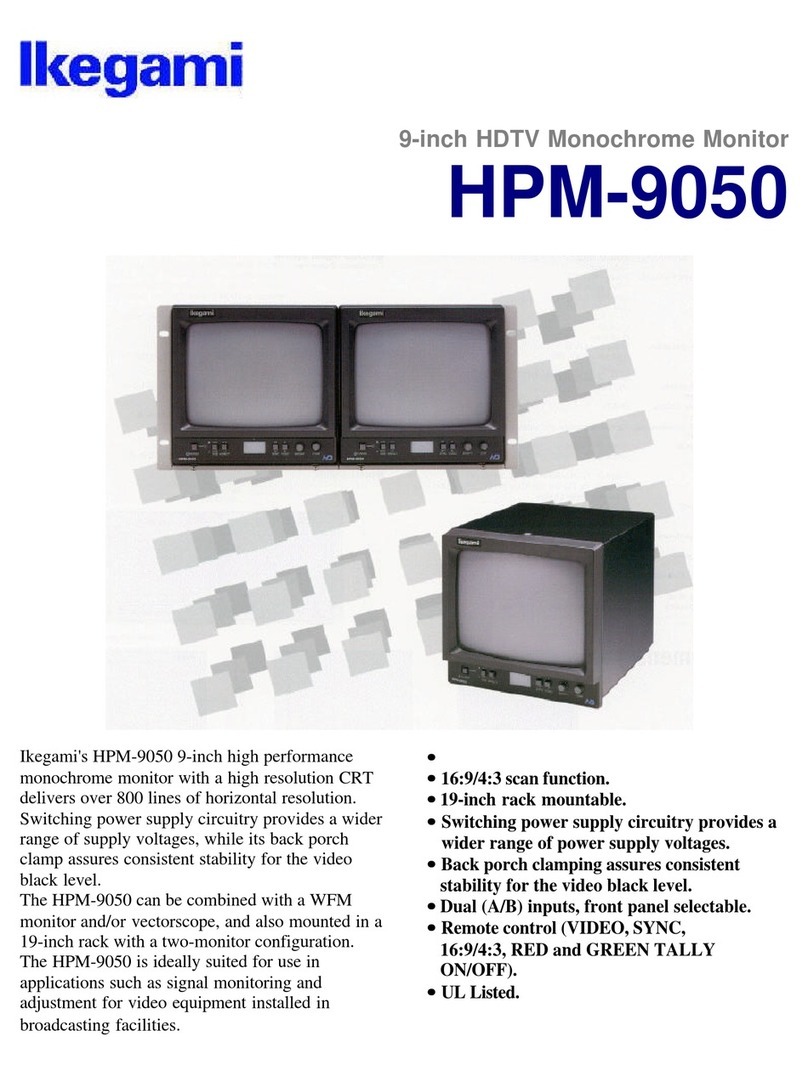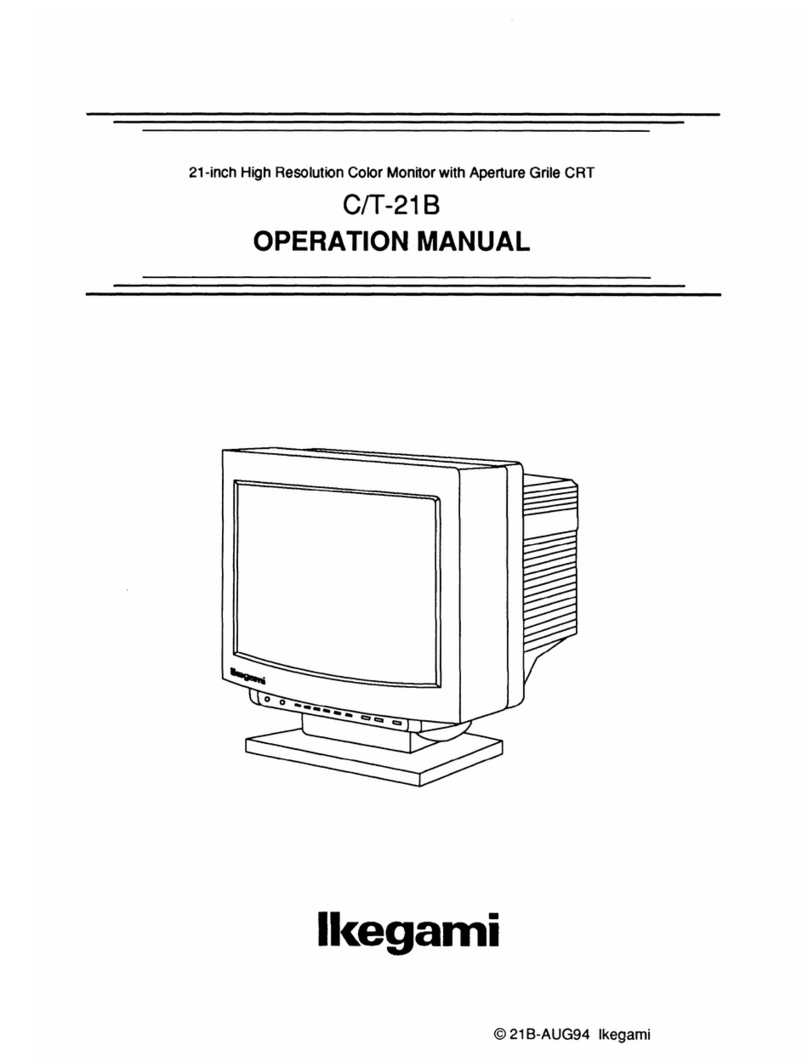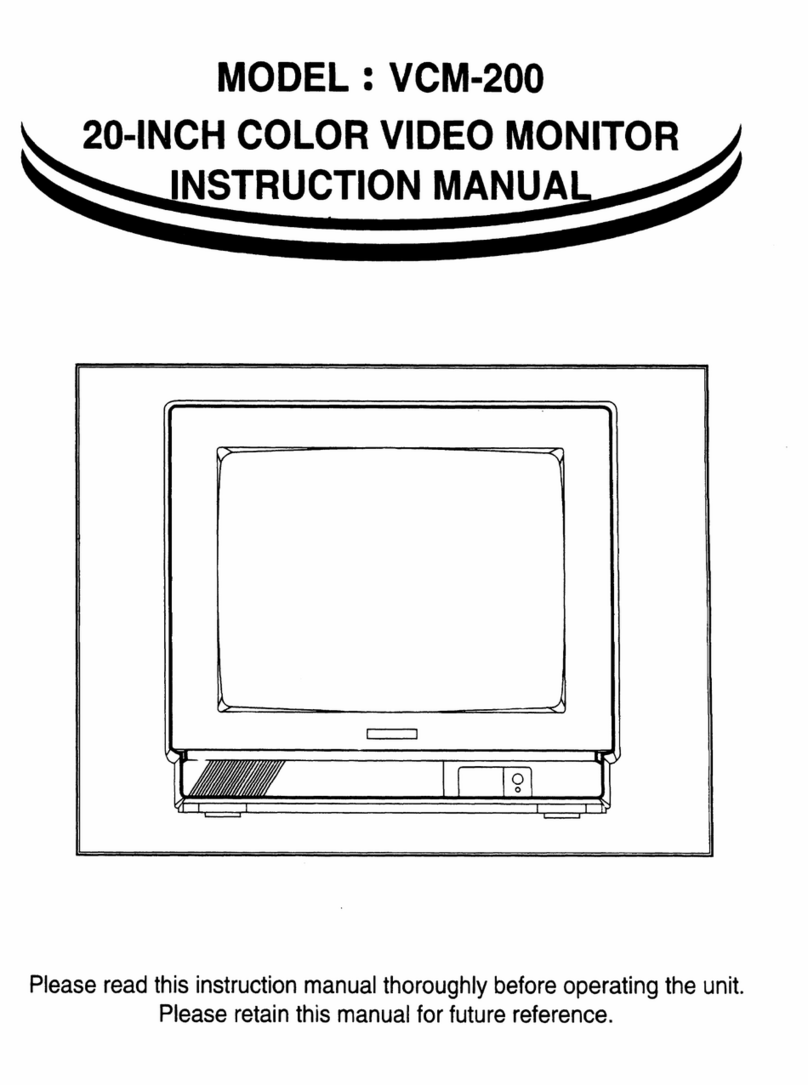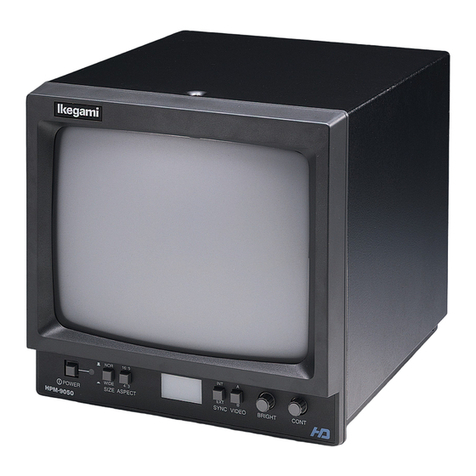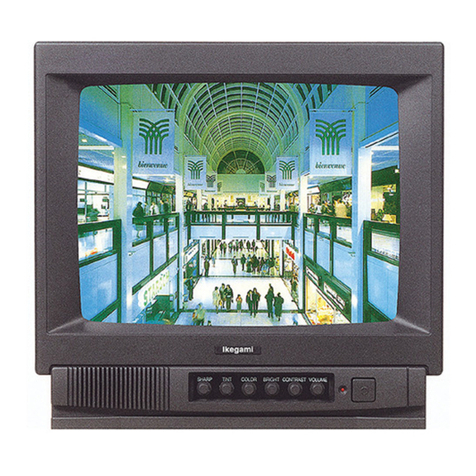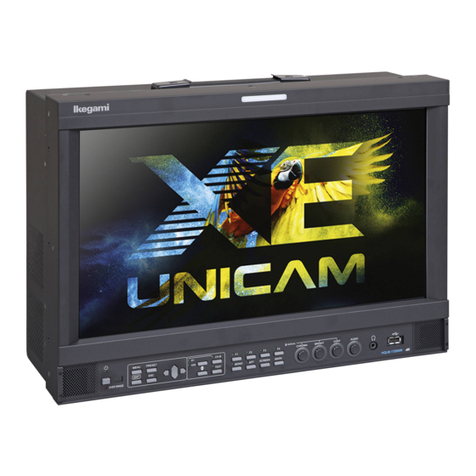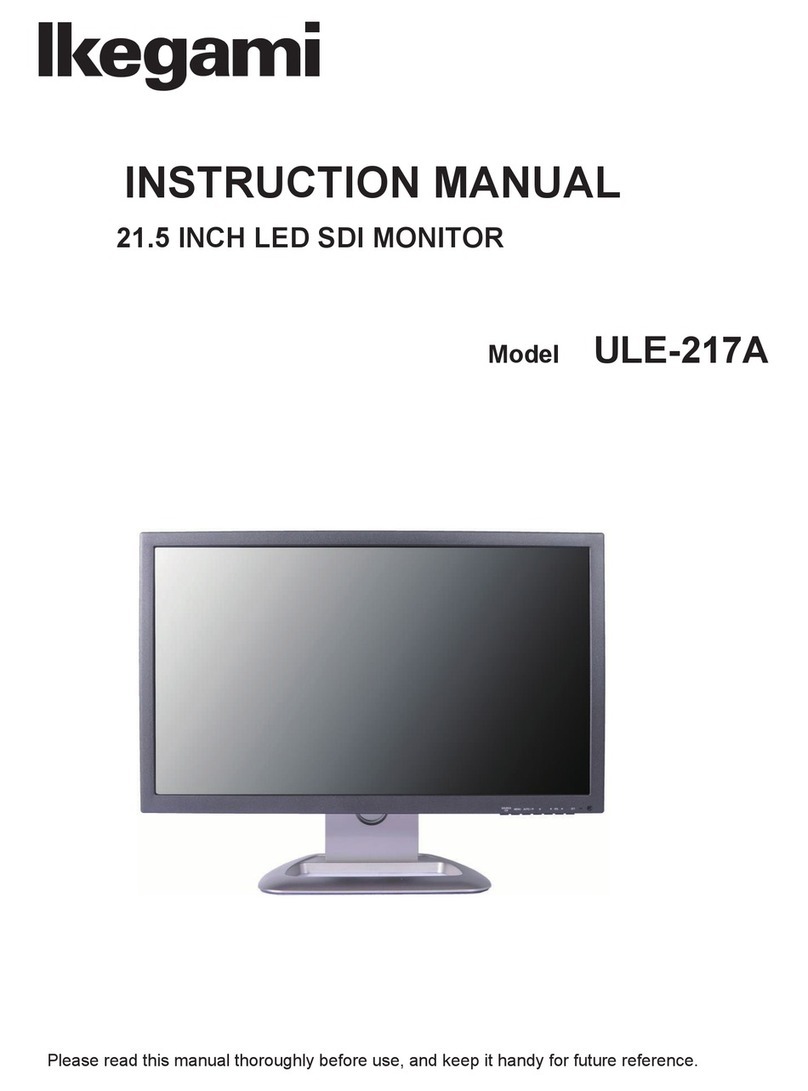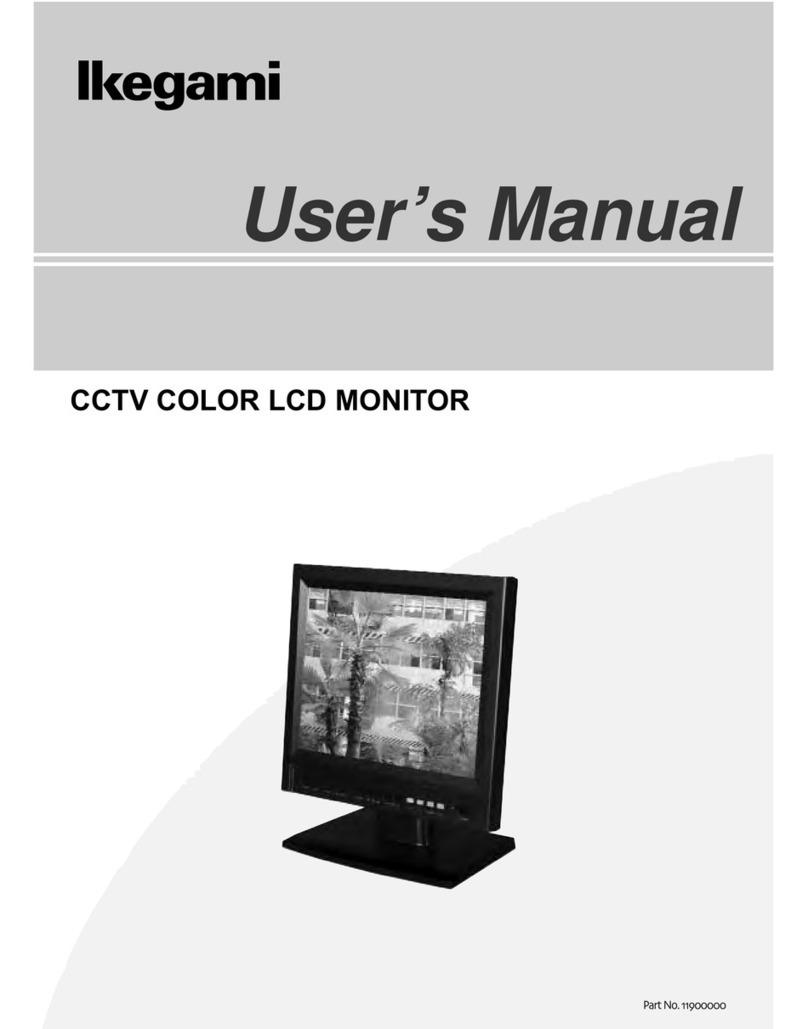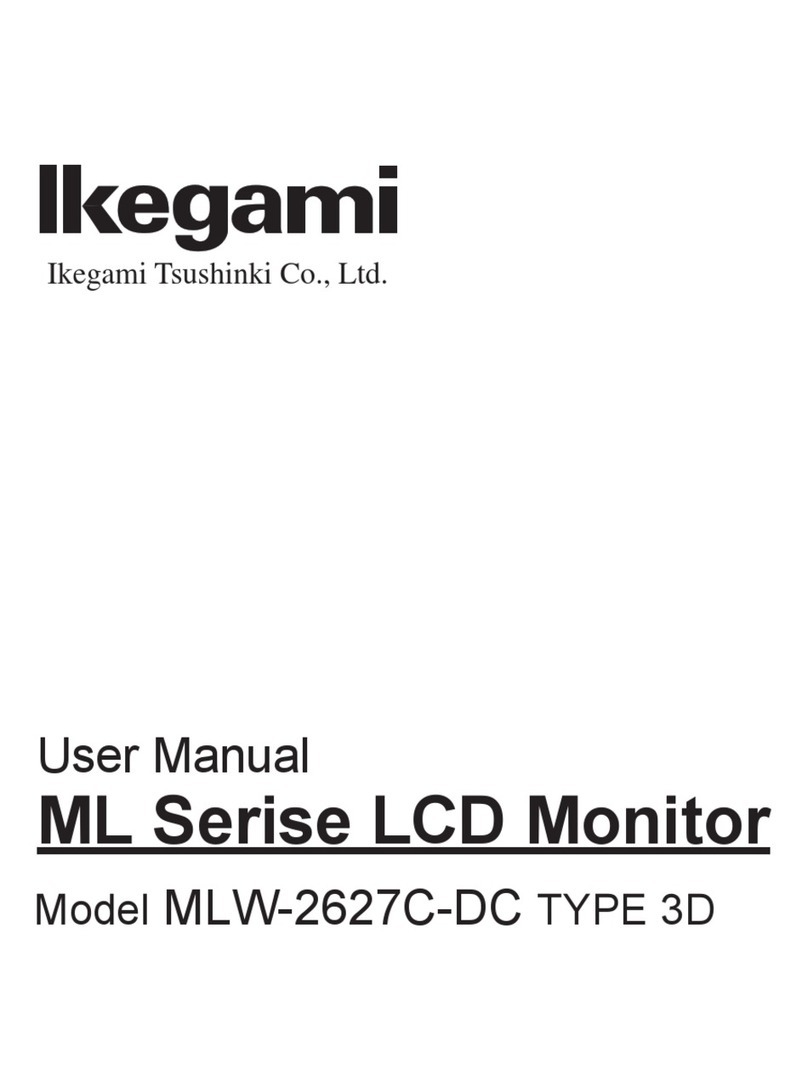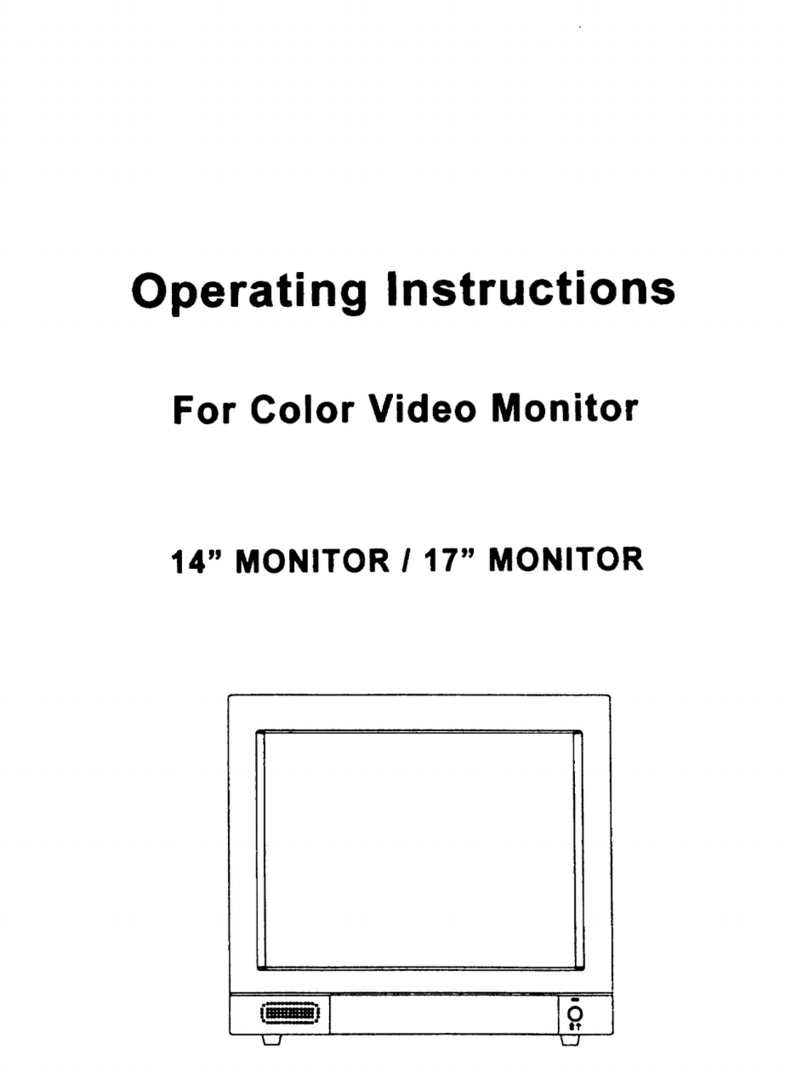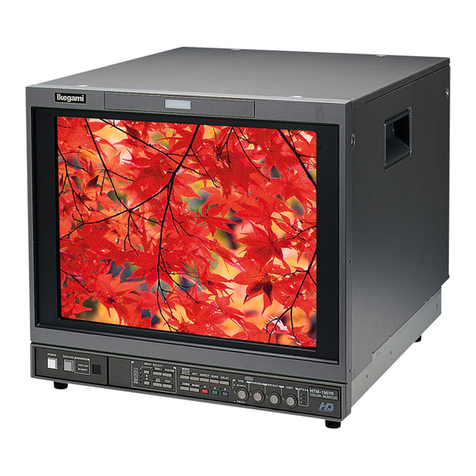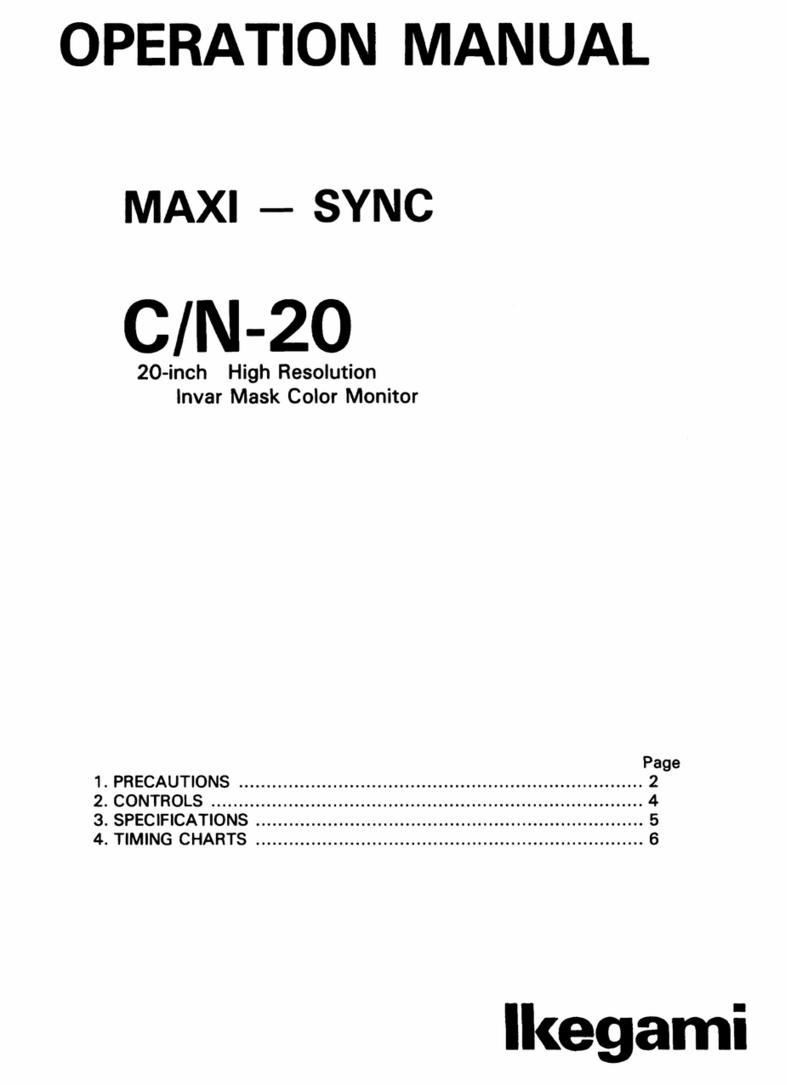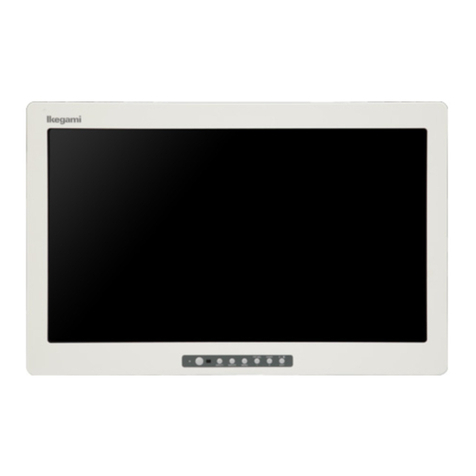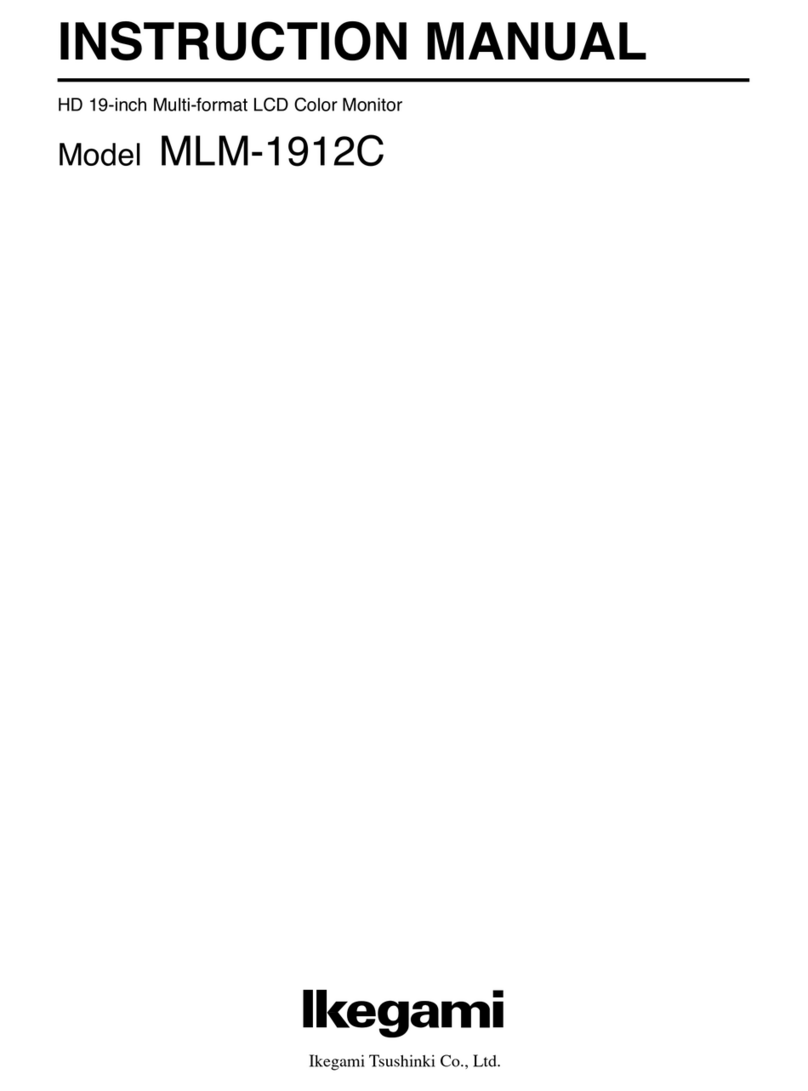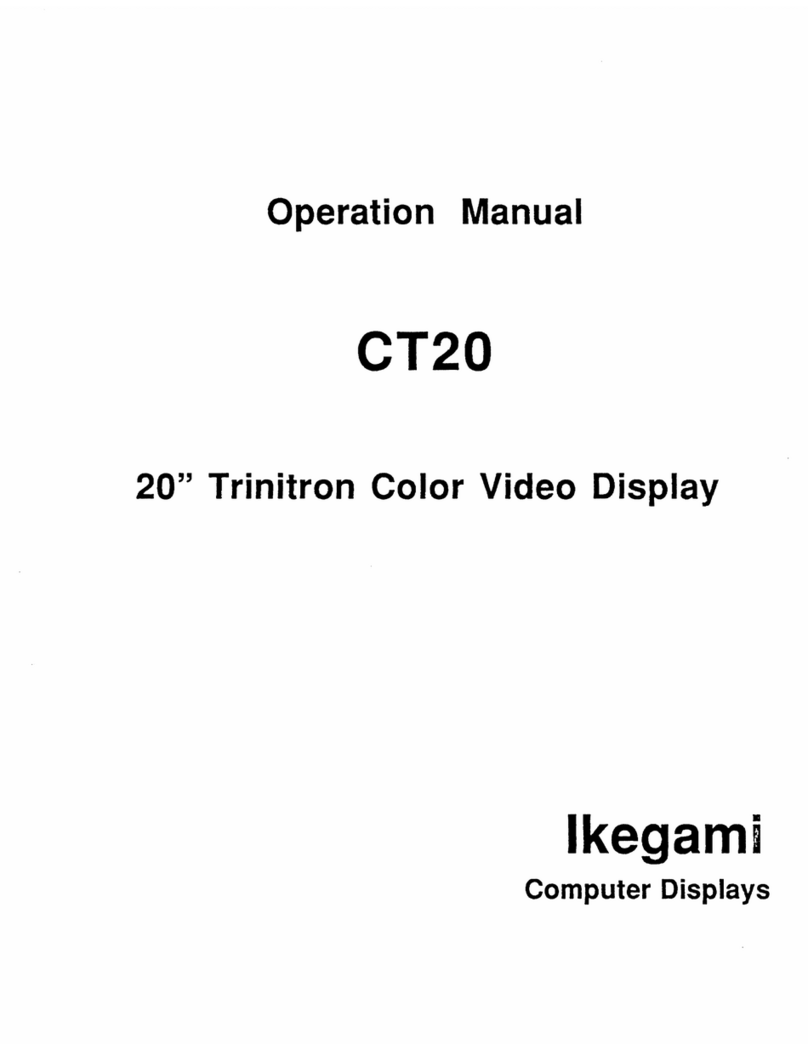....._,
[·._.·.·.
.-<i
[·
r..
I
l '
[··
r..
I
[,
[
r
I.;
r··
t .
[.
l_·
L.
1. OUTLINE
This series color monitors have the input systems suited to
the diversified system needs. In addition to 3 video input
systems, au RGB input system or a YPoPn input system is
provided as a stand ard equipmen t. A Dl, D2 or D3 input
syste m (2 serial inpu t systems and 1 parallel input
system) or a Y/ C inpu t system can be provided as
an optiona l equipment, RGB and YPnPn can be
corresponded to various standard s and you can adjust the
chroma level by front pane l. When the optional decoder
board (P AL or SECAM) is inserted into the SLOT section
in add ition to NTSC decoder board, this monitor can be
made automatic ally to operate with 2 format signals. Thus
this product is the maste r monitor for the professional
with the various functions, fine performa nce and stability
which is corresponded to various broadcasting system and
used for the final check of th e video signal.
2. FEATURES
(1) High-performanceinline GunCRT
This monitor uses an iuline gun dot mask high-deta il
CRT. The dot mask pitch is a fine 0.31 mm for the
TM14-20RH / RP , 0.43 mm for th e TM20-20RH/ RP,
and 0.28 mm for the TM20-30RH/ RP.
Since the CRT for the 20 series (the same CRT as f9r
the 15 and 19 series) coats bismuth oxide (BiO) on
the shadow mask and th e 30 series uses inver material
for the shadow mask mat erial, th e doming (beam
displacement due to thermal deformation of th e
shadow mask) when the brilliance is raised is greatly
reduced.
(2) DigitalControl
Control is completely digitized with an 8-bit MPU
and 10-bit D/ A converter . Therefore, various status
displays are possible and aut o setup 'can be carried
out by j ust adding the probe. Since control uses
rotary encoders, you can adjust with the same feeling
as with the analog contr ollers you have used up till
now.
(3) Auto Setup Function
The optional ASP-15 auto setup probe can be used to
automat ically adjust the factory setting color
tem perature . Also, if you hav e the probe memorize
the operator's unique color temper ature, then you can
automati cally set any number of monitors (15 series,
18 series, 20 series, 30 series) to that color
temperat ure.
(4) 4 ColorTemperaturescan he StoredInto Memory
This monitor can store three color temperatures in
addition to the factory setting. This means you can
quickly and easily select the whit e balance sett ing
best for th e state of the input image and the usage
objective .
(5) RemoteControlFunction
In addition to the standard parallel remote connector,
there are also an opt ional infrared wireless remote
controller(RCT-2 0) and an optiona l *serial control
box that can use a loop through connection with a
BNC cable.
Any single one of these remote contro llers can control
up to 99 monitors.
* ..· mad e-to-order
(6) BeamFeedbackSystem(BFS)
The beam feedback system, which detec ts the CRT
cathode current, provides images with stab le white
balanc e for a long time.
(7) Built-inCCDCombFilter(only NTSC )
The CCD lH-delay line greatl y improves the cross
luminance and the cross color. Also, the optional
Faroudja comb decoder provi des an image with no
cross luminance in the section with no vertical
relationship.
(8) SufficientInputSystems
Th ere are four inpu t system s, thr ee composite video
input and one RGB or Y/ PB/Pn (Y/ B-Y/R -Y) input.
(Th e lat ter can be switched between RGB and Y/
Pa/Pa with the pull-out panel ~peration section.)
Optio ns are 8/ 10-bit digital (Dl , D2, D3) input and
Y/ C input. In addition , th e DC301 dual component
board can be used for 2-chann el component input .
(9) Built-inGenerators
Five different types of test signals (cross hatch, flat
field, window, chara cter, and step wave with pluge
signal) and you can switch the output format between
525 (60 Hz)and 625 (50 Hz) with simple menu
operations. Safe title signals (80%, 85%, 90%, 95%,
100%, 80+90+100 %, 5-partition cross hatch, and 10-
partition cross hat ch) are built in as sta ndard features .
(10) VideoBoardModularization
Th e video syste m boards are plug-in type. To make
repairs and checks easier, the video, def(lection), and
power boards can be removed with the monitor itself
still in its rack.
-3 -
